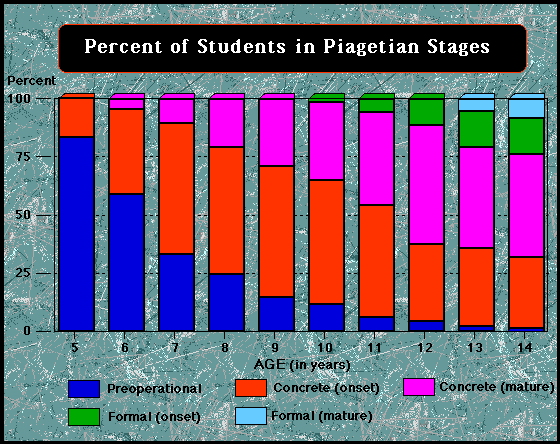In the 20th century, Jean Piaget was the leader of his time for researching developmental psychology in learning; mostly focusing on the biological reasons for "how we know what we know." Piaget believed that reality requires transformations and stages, which is why the mind must have adaptive features to obtain information. Piaget focused on intelligence and behavior to formulate his theory on how the thinker operates. His predication was that schemes were created psychologically by the thinker to stage the world and plan out the action. "This adaptation is driven by a biological drive to obtain balance between schemes and the environment (equilibration)." Piaget believed that at birth, humans have natural reflexes, but those transform to fit our environment as the person matures. The two most influential way to adapt are assimilation and accommodation.
Assimilation: the process of using or transforming the environment so that it can be placed in preexisting cognitive structures. For example, when an infant uses a sucking schema that was developed by sucking on a small bottle when attempting to suck on a larger bottle
Accommodation: the process of changing cognitive structures in order to accept something from the environment. Both processes are used simultaneously and alternately throughout life. For example, the child needs to modify a sucking schema developed by sucking on a pacifier to one that would be successful for sucking on a bottle
The four stages of Piaget's theory of Cognitive Development are the sensorimotor stage, the pre-operational stage, the concrete operational stage, and the formal operative stage.
The sensorimotor stage occurs at birth in six specific stages. The physical actions and interactions help the baby understand their environment, and their knowledge grows exponentially. Their reactions show the intelligence of the baby's adaption without using any symbols until the baby is ready is move into the next stage. Memory and object permanence is developed around seven months, and mobility with the physical development increase, helping the baby further adapt intellectually.
The pre-operational stage is from the toddler age until early childhood. Language is starting to develop and symbols become more important to the child. Imagination evolves, along with memory. Thinking is disjointed, confounded, and arguably egocentric.
The concrete operational stage is from elementary to early adolescence. Operational thinking grows, while egocentric thoughts lessen. Intelligence takes a coherent and consistent path, relying on individual interpretations of symbols pertaining to concrete objects.
Formal operational stage begins in adolescence years and stays consistent in adulthood. Towards the beginning, egocentric thoughts return. Abstract concepts are connected to the ordered and legitimate use symbols.
Piaget failed to note that biological maturity may not always line up with their mental capabilities. Data from adolescent populations indicates that only 30 to 35% of high school seniors attain the cognitive development stage of formal operations (Kuhn, Langer, Kohlberg & Haan, 1977).

Information researched at:
Huitt, W., & Hummel, J. (2003). Piaget's theory of cognitive development. Educational Psychology Interactive. Valdosta, GA: Valdosta State University. http://www.edpsycinteractive.org
No comments:
Post a Comment